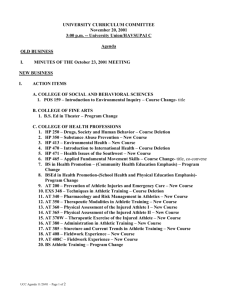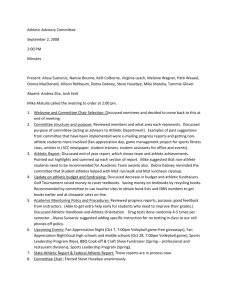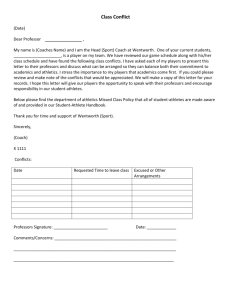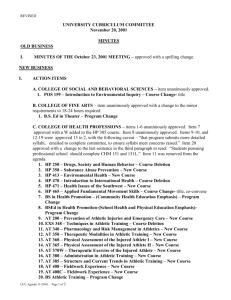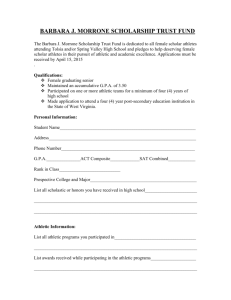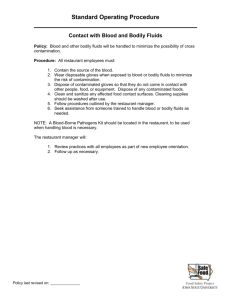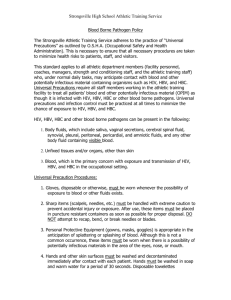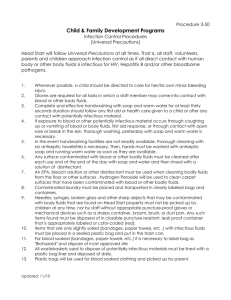Blood-Borne Pathogens Information - California Lutheran University
advertisement
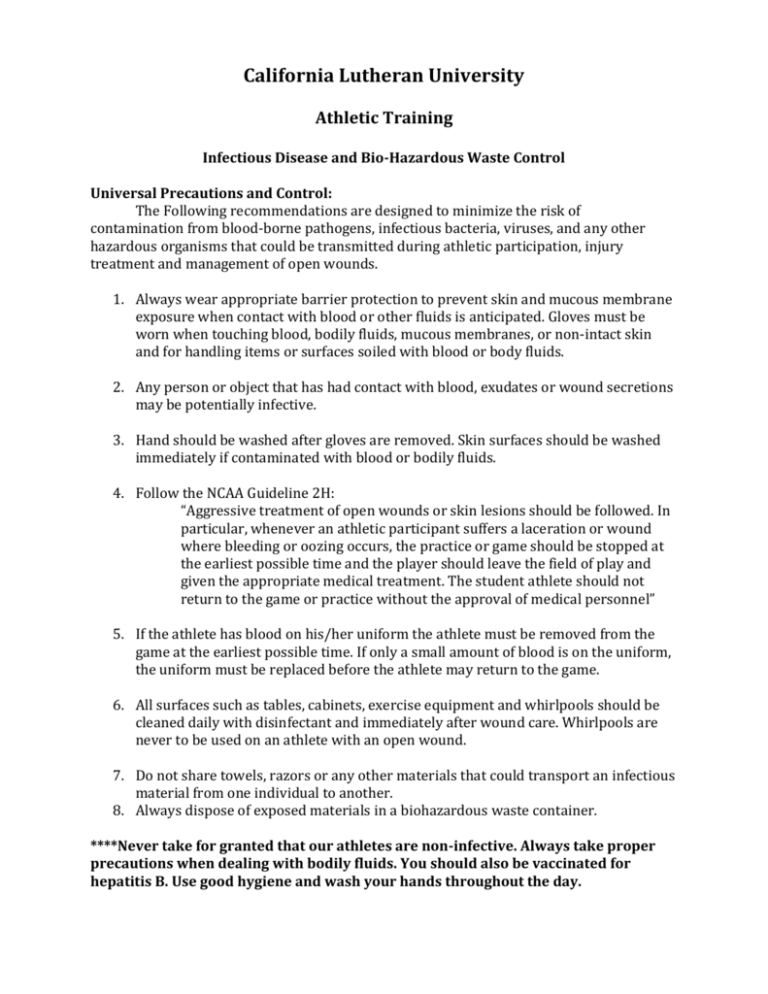
California Lutheran University Athletic Training Infectious Disease and Bio-Hazardous Waste Control Universal Precautions and Control: The Following recommendations are designed to minimize the risk of contamination from blood-borne pathogens, infectious bacteria, viruses, and any other hazardous organisms that could be transmitted during athletic participation, injury treatment and management of open wounds. 1. Always wear appropriate barrier protection to prevent skin and mucous membrane exposure when contact with blood or other fluids is anticipated. Gloves must be worn when touching blood, bodily fluids, mucous membranes, or non-intact skin and for handling items or surfaces soiled with blood or body fluids. 2. Any person or object that has had contact with blood, exudates or wound secretions may be potentially infective. 3. Hand should be washed after gloves are removed. Skin surfaces should be washed immediately if contaminated with blood or bodily fluids. 4. Follow the NCAA Guideline 2H: “Aggressive treatment of open wounds or skin lesions should be followed. In particular, whenever an athletic participant suffers a laceration or wound where bleeding or oozing occurs, the practice or game should be stopped at the earliest possible time and the player should leave the field of play and given the appropriate medical treatment. The student athlete should not return to the game or practice without the approval of medical personnel” 5. If the athlete has blood on his/her uniform the athlete must be removed from the game at the earliest possible time. If only a small amount of blood is on the uniform, the uniform must be replaced before the athlete may return to the game. 6. All surfaces such as tables, cabinets, exercise equipment and whirlpools should be cleaned daily with disinfectant and immediately after wound care. Whirlpools are never to be used on an athlete with an open wound. 7. Do not share towels, razors or any other materials that could transport an infectious material from one individual to another. 8. Always dispose of exposed materials in a biohazardous waste container. ****Never take for granted that our athletes are non-infective. Always take proper precautions when dealing with bodily fluids. You should also be vaccinated for hepatitis B. Use good hygiene and wash your hands throughout the day. CALIFORNIA LUTHERAN UNIVERSITY ATHLETIC TRAINING COMMUNICABLE DISEASES ACTION PLAN AND POLICIES Pre-participation medical evaluations are required for all athletes and ATEP students upon entrance into CLU’s intercollegiate athletic program and athletic training educational program. This initial evaluation will include a comprehensive health history, immunization history as defined by current Centers for Disease Control and Prevention (CDC) guidelines and relevant physical exam. Each year an updated history will be performed and medical records will be updated through the Universities Health Center. Each year the following required instructional courses will be given to all ATEP students updating them on changes in policies and procedures and any new pertinent information regarding the prevention, transmission and treatment of infectious diseases. 1. Blood-borne pathogens and intercollegiate athletes. Including: Hepatitis B Virus (HVB), HIV (AIDS Virus), Universal precautions and individual personal protection. 2. Sexually transmitted diseases. 3. OSHA training pertinent to intercollegiate athletic training including the ATEP’s health care responsibilities and administrative issues.

